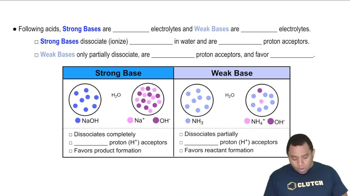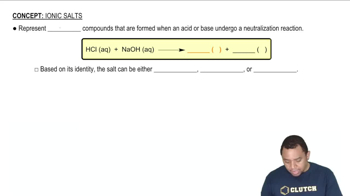Here are the essential concepts you must grasp in order to answer the question correctly.
Strong vs. Weak Acids and Bases
Strong acids, like HClO4, completely dissociate in water, leading to a straightforward calculation of pH based on molarity. In contrast, weak acids, such as HClO2, only partially dissociate, requiring the use of the acid dissociation constant (Ka) to determine the concentration of hydrogen ions and thus the pH.
Recommended video:
pH Scale
The pH scale measures the acidity or basicity of a solution, ranging from 0 to 14. A pH less than 7 indicates an acidic solution, while a pH greater than 7 indicates a basic solution. The pH is calculated using the formula pH = -log[H+], where [H+] is the concentration of hydrogen ions in the solution.
Recommended video:
Salt Hydrolysis
Salts formed from weak acids and strong bases, like KCN, can undergo hydrolysis in water, affecting the pH of the solution. For example, KCN dissociates into K+ and CN-, where CN- can react with water to produce OH- ions, resulting in a basic solution. Understanding this concept is crucial for calculating the pH of solutions containing salts.
Recommended video:

 Verified step by step guidance
Verified step by step guidance

